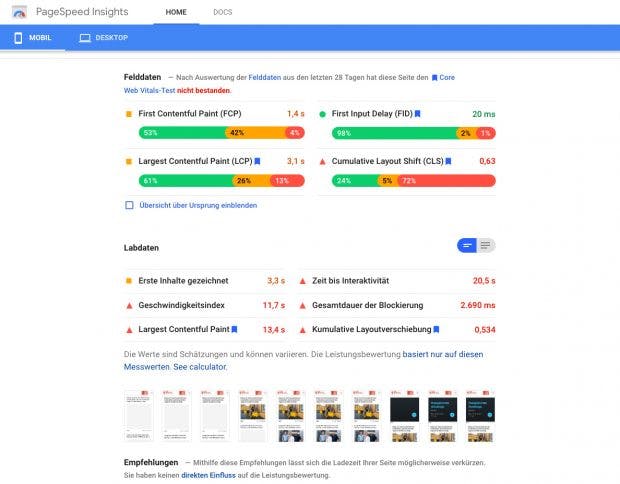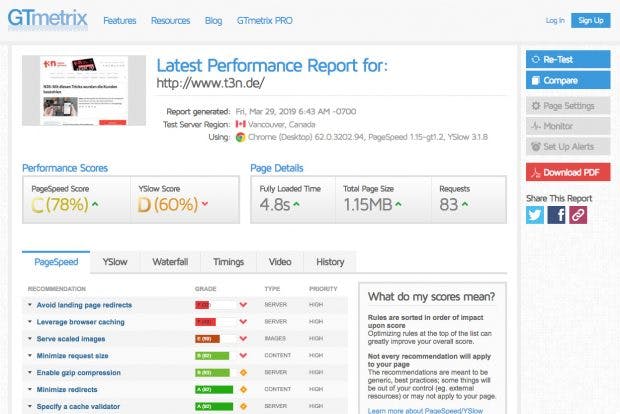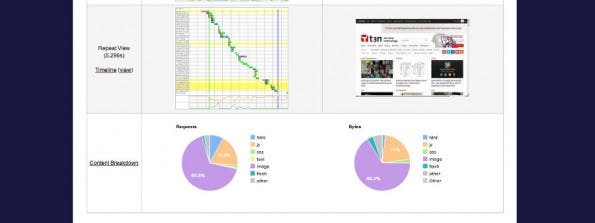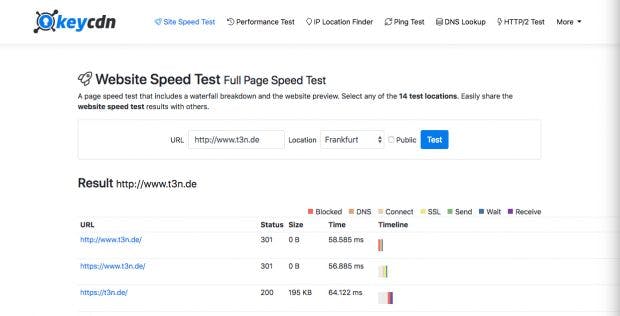In order to create a positive user experience, the loading times and reaction speeds of a website are extremely important. We introduce you to five tools to put your website to the test.
The loading speed of websites has been influencing its position in Google search results for several years. In addition, users tend to be quickly annoyed by slow websites. Studies in the past have repeatedly shown that shorter loading times can have a positive effect on the conversion rate. But before you try to reduce the loading times of your website, you should first see how fast it loads now and how you stand compared to your competition. In the following, we will introduce you to five free tools with which you can measure the speed of websites.
Measure website speed: 5 free tools at a glance
Pagespeed Insights

Free speed measurement: Google’s Pagespeed Insights now show you the evaluation according to the Web Vitals key figures. (Screenshot: developers.google.com)
From 2021, the Web Vitals key figures introduced by Google in May 2020 should have an impact on the ranking. The Web Vitals metrics consist of three individual metrics and measure the rendering time of the largest element within the visible area of the page, the time that elapses between user interaction and the browser’s reaction, and the visual stability of a website. Google also has the speed measurement tool, Pagespeed Insights, revised. The tool now shows you the values of the individual metrics as well as the total value calculated from them. The tool also gives you advice on how to achieve better values.
Web Vitals: Google’s key figures for evaluating the user experience explained
GT metrix

GT-Metrix combines different rating systems for the speed of websites and has a powerful filter tool. (Screenshot: GT-Metrix / t3n)
Since the latest update shows you GT metrix also shows the SSL connection times in a waterfall diagram. If you want, you can also use the tool to create comprehensive filters based on regular expressions and thus immerse yourself in the results even more closely.
pingdom.com

Website speed optimization: Pingdom works quite quickly. (Screenshot: Pingdom / t3n)
The tool Pingdom works quickly and provides you with the results in the form of various statistics. For example, there is a waterfall diagram with which you can easily see which elements take the longest to load. The list can also be sorted according to different criteria. You can also use Pingdom to determine from which continent the speed test should be carried out.
webpagetest.org

webpagetest.org: Probably one of the most powerful tools on this list. (Screenshot: webpagetest.org / t3n)
On webpagetest.org you not only choose your URL, but also determine which browser and from which location the test should be carried out. For example, you can test how fast the page builds up for potential customers from overseas or how fast your page actually is for German visitors.
Site speed test

Keycdn’s Site Speed Test is another way to measure the speed of your website. (Screenshot: Keycdn / t3n)
Also at Site Speed Test from Keycdn you can determine from which region your website should be tested. The result is shown as a waterfall diagram. There is, however, no distinction between mobile and desktop.
Also interesting:
This article is revised regularly. The last update is from August 4, 2020.




